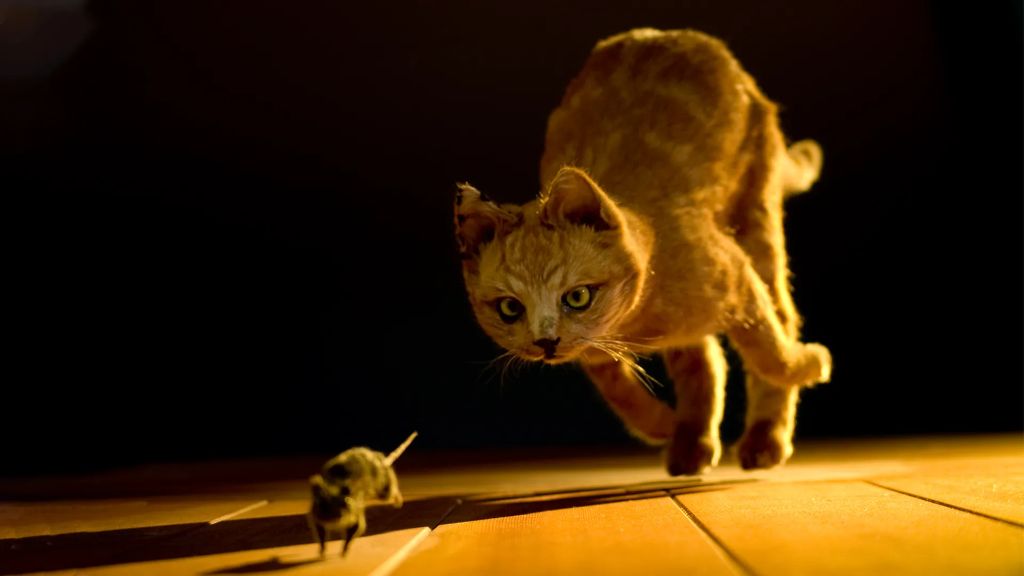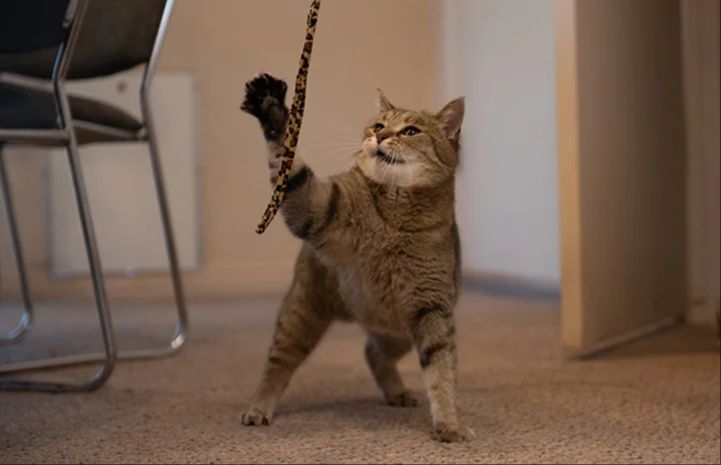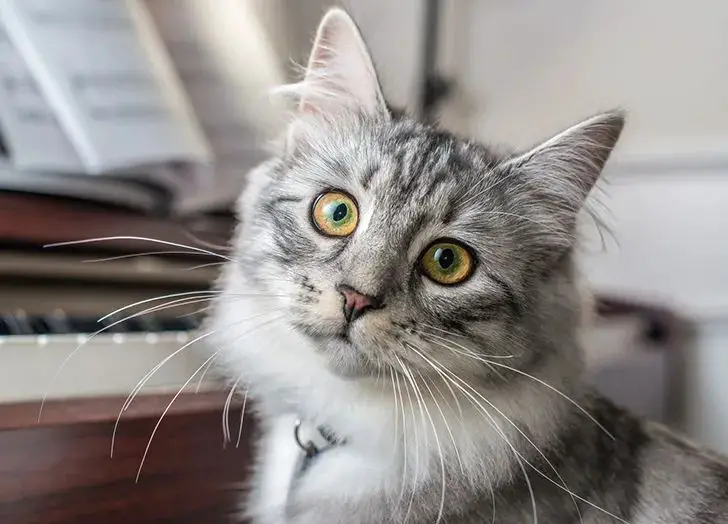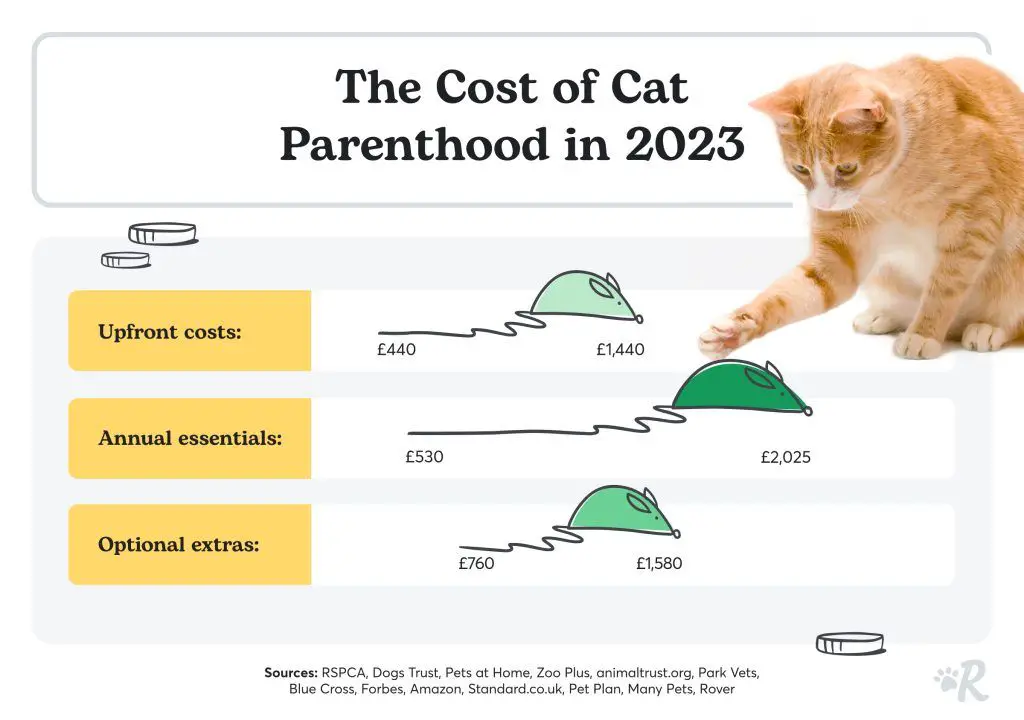Companionship
Cats provide emotional support and affection through their playful behavior and natural curiosity. Their affectionate and cuddly characteristics foster a sense of calmness and security that relieves anxiety and stress. Studies have shown that playing with cats increases serotonin and dopamine levels, promoting a positive mood. Cat companionship has health benefits like lowering blood pressure, reducing risk of heart attack, easing depression, and alleviating loneliness (https://www.helpguide.org/articles/healthy-living/joys-of-owning-a-cat.htm). The unconditional love of a cat creates a sense of purpose and self-worth. Their soothing purrs and gentle head rubs make cat owners feel cared for. Cats provide social support and affection without demanding constant attention. Simply having a cat around improves mood and mental health.
Pest Control

Cats are excellent hunters and can help keep homes free of mice, rats, and other rodents that are seen as pests. According to CNN, Cats, the ultimate weapon in public health, cats have worked as pest control for humans for at least 10,000 years. Their strong hunting instincts make them adept at catching and killing small prey like rodents. The mere presence of a cat can also deter pests. Rats and mice are able to smell cats’ scent and will avoid places where cats live.
Cats hunt rodents by patiently lying in wait or stealthily stalking their prey. When they pounce, they kill rodents swiftly with a bite to the neck or spine. They will even eat their prey, which provides nutrition and disposes of the pest. According to WikiHow, having cats around can significantly reduce rodent populations and keep homes pest-free. Their natural hunting behaviors make cats an organic, non-toxic form of pest control.
Independence
One of the benefits of having a cat is that they are very independent pets. Cats do not require constant attention and care like some other pets, especially dogs. According to research from the University of Lincoln, cats do not rely on their owners as a source of security in the same way dogs do (Source). This means cats are comfortable being left alone for periods of time without their owner present and do not demand constant interaction and attention.
The study found that although cats can form attachments and social relationships with their owners, they do not depend on them for their basic needs. Cats feel safe and secure on their own, meaning they are happy to be independent and look after themselves when their owner is away. This makes cats a good pet for owners who work long hours or travel frequently. Unlike dogs, cats will not suffer from separation anxiety if left alone for long stretches. Their independent nature allows them to entertain themselves and be content without requiring their owner’s presence at all times.
Lower Maintenance

One of the biggest advantages of owning a cat is that they require much less maintenance than many other pets, especially dogs. Cats are very good at grooming and cleaning themselves, using their rough tongues to keep their fur neat and tidy. This means they do not require regular bathing or brushing like some pets. According to Freshpet, “Cats are naturally clean animals and groom themselves regularly throughout the day. Unless they get into something messy, they do a great job keeping their coats neat and tidy on their own.”
Cats are also very self-sufficient when it comes to bathroom needs. Litter boxes provide an easy way for cats to relieve themselves indoor. As Karingal Vet states, “Cats require less maintenance than dogs. They self-clean, do not need walks nor to be taken outside to go to the toilet.” This saves cat owners significant time and hassle.
Finally, cats do not require walking like dogs. They are content to explore and get exercise indoors. Melissa Rose notes on Medium that cats “can get all the exercise they need indoors by climbing, jumping, running, and playing.” This makes them far less demanding in terms of daily interaction and activity.
Sources:
https://www.freshpet.com/blog/10-reasons-why-cats-make-great-pets
Teach Responsibility
Caring for a cat teaches kids responsibility in various ways. Having to feed, provide water, and clean the litter box for a cat on a daily basis instills habits of responsibility in children from an early age (https://www.americanhumane.org/blog/benefits-of-cats-for-children/). The direct results of forgetting to do these tasks, such as a hungry or dirty cat, provide valuable lessons. Children learn that they must care for the needs of their pet. In addition, activities like playing with cats and brushing their fur teach kids how to gently interact with animals. Overall, the various duties involved in owning a cat give children hands-on experience with being accountable for another living creature.
Lower Allergens
Many people with dog allergies can tolerate cats. This is because cats produce less of the Fel d 1 protein, the major allergen present in cat dander and saliva, compared to the amount of Can f 1 protein that dogs produce.

According to PetMD, while all cats produce Fel d 1, some breeds produce less of it than others. These “hypoallergenic” cat breeds include the Siberian, Siamese, Bengal, Russian Blue, Sphynx, Devon Rex, and Cornish Rex. Their coats produce less dander, so they distribute less allergen in the environment. Those with allergies may find these breeds easier to live with [1].
PetFinder also lists these breeds among the top hypoallergenic options. They note that no cat is 100% hypoallergenic, but these breeds are likely to trigger fewer allergy symptoms for those sensitive to cats [2].
For those looking to adopt a cat that won’t aggravate allergies, focusing on breeds that naturally produce less dander can make cohabitation more comfortable.
Environmental Benefits
Cats have a smaller carbon pawprint than dogs because they are generally smaller animals and require less food. According to a study from UCLA, cats’ meat consumption requires about one-third the energy to produce as dogs’ meat consumption. This is because cats eat less than dogs on average. The production of cat food requires fewer resources than dog food, resulting in less environmental impact.
Cats are more efficient when it comes to converting feed to protein. A 2021 study found the production of dry cat food resulted in lower greenhouse gas emissions, energy use, and land use than dry dog food. The researchers concluded that cats have a lower environmental impact than dogs primarily due to their smaller size and different metabolism.
Fewer Behavioral Issues
Cats tend to have fewer behavioral issues compared to dogs. One key difference is that cats are less prone to separation anxiety when left alone. While dogs can become very distressed when separated from their owner, cats are typically more independent and comfortable being left alone for periods of time [1].
Cats also tend to be quieter than dogs. They rarely bark or make loud noises that could disturb neighbors. Cats generally communicate through meowing, purring, or body language rather than disruptive vocalizations [2]. This makes cats well-suited to apartments or housing situations where noise may be a concern.
Because cats exhibit fewer behavior issues like separation anxiety, barking, chewing, digging, and excitability, they may be easier to care for than dogs for some owners. Their independence and quiet nature allow them to be left alone without disruptive behaviors.
Lower Cost
Cats are generally less expensive to care for than dogs. Cat food, litter, toys and other supplies tend to cost less than similar products for dogs. According to The True Cost of Owning a Dog or Cat, the average annual cost of caring for a medium-sized dog is $1,001, while caring for a cat costs an average of $803 annually.

Cats also tend to have lower medical costs over their lifetime. Vaccines, spay/neuter surgery, dental cleanings and other routine veterinary care is less expensive for cats. Additionally, cats are less prone to emergency costs from eating foreign objects or orthopedic injuries than dogs.
Unlike dogs, cats do not require obedience training or ongoing professional services like dog walking. The independent nature of cats makes them easier and more affordable to care for in the long run.
Long Lifespan
Cats are known for their longevity and can live 15-20 years on average (vetwest.com.au, petmd.com). Indoor cats tend to live longer than outdoor cats since they are protected from environmental dangers and injuries. With proper nutrition and veterinary care, many cats live well into their late teens and even early 20s.
The long lifespan of cats allows them to provide companionship and form strong bonds with their human families over many years. Where a dog may only be part of a family for 10-15 years, a cat can often be a loyal companion for nearly two decades. Their long lives allow cats to become true members of the household.

